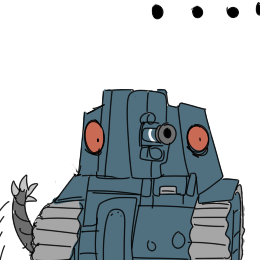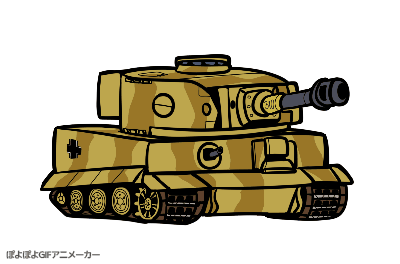LAO
Check sidebar for Summer Camp 2018 Insults. 329 words added.
LAO isn't actually the name of the language. It actually stands for "Language of the Ancient Ora" which is why it is in all caps. The language doesn't actually have a name within the culture it is from, and the name LAO was given by the modern world.
LAO isn't actually the name of the language. It actually stands for "Language of the Ancient Ora" which is why it is in all caps. The language doesn't actually have a name within the culture it is from, and the name LAO was given by the modern world.
Writing System
Each symbol is 101x101 pixels.Vowel indication lines are placed to be as aesthetically pleasing as possible. As a result, vowel indications may over lap, but can be moved closer to the consonant indication so to avoid obstruction.
Letter Types
Originating from the patterns found when looking at natural crystal structures, LAO is designed to be as geometric and uniform as possible. There are four types of consonants in LAO: Empty (K - D - B - F - Ch), Boxed (S - N - M - V - R), Single-Clawed (G - T - P - Jh - Sh), and Double-Clawed (J - L - Z - H - Th).Additionally, there may be Vertical-Boxed and Horizontal-Boxed symbols, which only refer to 'Y' and 'W'.
In terms of vowels, there are also four types: NorthWest (Oh - Eh - Aa - Eu), SouthEast (Ah - Ih - Ei - Uh), Polar (Oi - Ai), and Double-Polar (Ee - Oo).
It should be noticed that LAO uses a lot of different sounds. The purpose of this is to organize types of word by sound, something which the grammar is built around. The benefit of this is that many LAO speakers possess the unique ability to imitate various accents. The historical reason for this comes from the significance of color in the culture of the People of Ore. Of the twelve main colors, each one needed its own unique combination of sounds, which lead to two consonant sounds and one vowel sound being developed for each. Brown, Grey, Black, and White wouldn't be named for years, and when they were they were given new combinations of old sounds.
Example
Words are written by overlapping certain characters. Vowels will always overlap the consonant to the left of it and never to the right. A new sound will always be written beginning at the center of the last sound. For vertical-consonant and vertical-vowel pairs (Keh, Sih, Jai, etc.) or double-bracketed consonants and vertical-vowel pairs (Cheh, Rih, Thee, etc.) horizontal symbols may not pass through the vowel indicator, which is the little line on either side of the vertical symbol. Instead, that part of the horizontal symbol is erased until the little line. This can be seen in the transition from "Rih" to "Pah" in the following example. As an example, the LAO word "Ifripavon", meaning "I Did Not Sing", will be used. Red symbols represent vowels and blue symbols represent consonants.Incidentally, the example is missing the vowel indication for the "Ih" sound at the beginning of the word. This was a mistake.
Phonology
LAO possesses 22 consonants and 12 vowels, which makes for 298 different sounds. While variety in sound is very important, speakers of LAO have a heavy reliance on the 'V', 'N', 'K', 'T', and 'R' sounds. Certain sounds may not exists across dialects, most notably the 'Y' and 'W' sounds, which are often treated as vowels and replaced with 'Ee' and 'Oo' in some LAO-speaking areas.
Sounds are written by overlaying the following vowel on top of the preceding consonant. Vowels following vowels are written on there own with a dot indicating that they're pronounced on their own. For example, without that indicator Boh and Oh would look exactly the same. Consonants following consonants are written without indication.
Sounds are written by overlaying the following vowel on top of the preceding consonant. Vowels following vowels are written on there own with a dot indicating that they're pronounced on their own. For example, without that indicator Boh and Oh would look exactly the same. Consonants following consonants are written without indication.
Morphology
Most LAO words possess a stem, a suffix, and the occasional prefix. All words belong in what's known as a 'System' a collection of words with a certain theme. For example, the -is system refers to anything involving language, speech, sound, writing, art, etc. Words in this system end with the suffix -is, such as Kipris (Name) and Priparis (Written Language).
In possessive language, the suffix -is is replaced with -i-pronoun. For example, "My Name" would be written as "Vo Kiprivo" or "Vokiprivo".
In active language, the suffix -is is replaced with -ra-pronoun or -pa-pronoun depending on whether or not the last sound in the word was a R- sound. For example, "I Name" would be "Kipripavo" whereas "I Listen" would be "Ontoniravo" because "Kipripavo" comes from Kipris and Ontonaravo comes from Ontonis.
This is not the case with active language. In active language, the tense doesn't add a prefix, but instead modify the suffix. In this case, "I Named" would become "Kipripoovo" and "I Will Name" would become "Kipripeevo".
By applying the -N sound to any word, the meaning of the word is negated.
Suffix
The unchanged system version of the word is typically not used in language on its own and needs to be conjugated into different forms, which usually involve changing the suffix from -is to either -i-pronoun for possessive language or -ra or -pa for active language.In possessive language, the suffix -is is replaced with -i-pronoun. For example, "My Name" would be written as "Vo Kiprivo" or "Vokiprivo".
In active language, the suffix -is is replaced with -ra-pronoun or -pa-pronoun depending on whether or not the last sound in the word was a R- sound. For example, "I Name" would be "Kipripavo" whereas "I Listen" would be "Ontoniravo" because "Kipripavo" comes from Kipris and Ontonaravo comes from Ontonis.
Prefix
The only time a prefix is added to a word is if it is possessive or in either the future or past tense. In the case of a possessive, an additional pronoun will be added to the beginning of the word. "My Name" would be either "Vo Kiprivo" or "Vokiprivo" depending on the speaker. When speaking in a tense that is not the present, Ee or Oo are added to the word, depending on it is in the future or past tense. For example, "My Name Was" would be either "Oovo Kiprivo" or "Oovokiprivo" and "My Name Will Be" would be either "Eevo Kiprivo" or "Eevokiprivo" .This is not the case with active language. In active language, the tense doesn't add a prefix, but instead modify the suffix. In this case, "I Named" would become "Kipripoovo" and "I Will Name" would become "Kipripeevo".
By applying the -N sound to any word, the meaning of the word is negated.
Syntax
LAO is designed so that a whole thought can be expressed in a single word. For example, "I Will Not Dance" is four words in English, but in LAO, it becomes "Orandoreevon". Breaking down the word into its separate parts, you get Orando from Orandos, Ee which indicates the future tense, the singular-personal pronoun Vo, and -N which indicates that the preceding meaning is not the case. What was a full sentence in English became a single sentence in LAO. This works similarly for possessive statements. "Was Not My Dance" would be written as either "Oovon Orandovon" or "Oovonorandovon". It is less common for possessive statements to be written entirely as a single word such as the latter. The former is more regularly used.
The way tense effects active language is a tad more complicated because instead of being an addition to a word, it replaces something. The tense replaces the -a part of -ra-pronoun or -pa-pronoun. "I Will Dance" | "Orandoreevo". "I Sang" | "Ifripoovo".
In referring to an item from the past or future that is neither active nor owned, and that belongs to the -es system, one may replace the -e, or -a in the case of plurals, with the tense signifier, or the signifier could be added to the beginning of the word. So, a doll(Peiles) from the past could be written as "Peiloo" or "Oopeile". This is not a common practice, and the language does not often require this model to be used.
This also applies to possessives. "My Ball" | "Vo Othrevo". "My Balls" | "Vo Othravo". "Our Ball" | "Va Othreva". "Our Balls" | "Va Othrava".
In regards to active language, plurality refers not the action itself but the number of individuals performing the action. "I Dance" | "Orandoravo". "We Dance" | "Orandorava".
Some words are only ever plural. Examples would be words that represent something which has no defined quantity, like water or fire. Elemental words are the most common example of this. "Shira", or "Water", would be odd it if was written as "Shire", because that would translate to "a water".
Saying "e" or "a" while gesturing to something is a colloquial way of saying "this".
This is also used to say "is". "My Name Is . . .", for example, would be written in the same order as English, "Vo Kiprivo e . . .".
If one chooses to use a modified system word like "Kipripa" instead of "Kipris", it would completely change the meaning of the sentence. The statement is no longer a fact, but describing something as like it. This is where the Concept-It-Pronoun works very well. "Edo e ____do" is a common way of saying "It Is Like . . ." or "It And This Are Alike". A more immature and improper way of saying something "Is Like . . ." is to repeat the final syllable. So "Childlike" would be "Edo e Apaledo" or "Apalele", which comes from "Apale" or "Child".
"I Am Dancing" should not be written as "Evo e Orandos" because "Evo" does not actually mean "I Am". The "e-" takes the place of the action in the active format, suggesting that the speaker is performing that action. Because "e" suggests a relationship between two items, the speaker actively provides a relationship between the two items by formatting it like this. "Evo e Orandos" is a closer translation of "I Am Capable Of Dancing" or "I Can Dance". This meaning changes depending of the system word being used.
The opposite, "I Cannot Dance", would be "Evon e Orandos" or "Evo en Orandos". By negating the "e", one is making the claim that there is not a relationship between the two things, so therefore, only of the words can be negated because, otherwise, "Evon en Orandos" would mean that there is not a relationship between not me and dancing, or "I cannot not dance". It becomes a double-negative. A system word like "Orandos" cannot be negated using the -N method.
Applying tense to these kinds of sentences involves replacing the "e" or "a" connector with the tense signifier. "I Was Able To Dance" | "Evo oo Orandos". "I Will Be Able To Dance" | "Evo ee Orandos".
This also applies to active and possessive statements. However, in the case of active statements, when combining the active word and the conjunction, the pronoun at the end of the first word is replaced with the conjunction. This is not the case for possessives. "I Am Dancing and Singing" | "Orandoravo Ekai Ifripavo" or "Orandorakai Ifripavo"
For possessives, if the second possessive belongs to the same person as the first, and therefore the same pronoun, the first pronoun of the second possessive does not need to be included. "My Dances or My Songs" | "Vo Orandavo Akoi Ifravo" or "Vo Orandavokoi Ifravo". Vague possessives, like "Mine" and "Yours" are specified as follows: "Mine and Yours" | "Vo Evo Ekai Lo Elo" or "Vo Evokai Lo Elo".
If one wants to apply negation to only one half of a statement, the half that is not true. The conjunction should never be negated. "Us And Not Them" | "Va Akai Kan".
Writing multi-digit is the same as writing a word. As an example, the number 1974 will be written out in LAO symbols. Pronounced Deh-Fih-Deh-Beh, "Defidebe" would be the LAO version of 1974. The following example also uses a modified version of the alphabet where the vowel indicators are pulled into the center of the symbol to leave room for other sounds.
Four is a very important number in the culture of the People of Ore.
Possessive Language
Possessive language sandwiches the subject in the pronouns of the person who owns it. "My Ball" | "Vo Othrevo". "Your Name" | "Lo Kiprilo". There is no need to modify the stem word with an additional suffix.Active Language
In active language, the stem word must be modified to accommodate the meaning. Depending on the last consonant in the stem, the additional suffix will either be -pa-pronoun, if the last consonant was an R-, or -ra-pronoun, if it was anything else. "I Dance" | "Orandoravo". "I Sing" | "Ifripavo". "Orandoravo" comes from the stem word for "Dance", "Orandos", and "Ifripavo" comes from the stem word for "Sing", "Ifris".Tense
As previously discussed, tense is dictated by the sounds "Ee" for future tense and "Oo" for past tense. The way tense is integrated into a sentence varies based on the kind of sentence being dealt with. In possessive language, the tense is added onto the prefix pronoun. To refer to a doll that was mine in the past, one would say "Oovo Peilevo", but if it's a doll they'll have in the future, it'd be "Eevo Peilevo".The way tense effects active language is a tad more complicated because instead of being an addition to a word, it replaces something. The tense replaces the -a part of -ra-pronoun or -pa-pronoun. "I Will Dance" | "Orandoreevo". "I Sang" | "Ifripoovo".
In referring to an item from the past or future that is neither active nor owned, and that belongs to the -es system, one may replace the -e, or -a in the case of plurals, with the tense signifier, or the signifier could be added to the beginning of the word. So, a doll(Peiles) from the past could be written as "Peiloo" or "Oopeile". This is not a common practice, and the language does not often require this model to be used.
Plurals
Plurality is not represented with an "S" like it is in English, but instead an "A". This is why there is no -as system. Nouns, which belong to the -es system, replace the e with a to indicate that there are multiple of the item. "Othre" means "Ball" in English. Therefore, "Othra" means "Balls" in English. This rule applies to all systems.This also applies to possessives. "My Ball" | "Vo Othrevo". "My Balls" | "Vo Othravo". "Our Ball" | "Va Othreva". "Our Balls" | "Va Othrava".
In regards to active language, plurality refers not the action itself but the number of individuals performing the action. "I Dance" | "Orandoravo". "We Dance" | "Orandorava".
Some words are only ever plural. Examples would be words that represent something which has no defined quantity, like water or fire. Elemental words are the most common example of this. "Shira", or "Water", would be odd it if was written as "Shire", because that would translate to "a water".
Negation
In order to negate a statement, it is common to apply an -N sound to the end of the word. This comes from the formal word for "No" which is "Eun". Originally, negation forced speakers to active include "Eun" after the statement, but has since evolved into the current -N sound. Instead of "Vo Kiprivo Eun" for "Not My Name" one might say "Von Kiprivon". This rule applies to all pronouns present in the statement. In active language, -N should only be present at the end of the. "I Am Not Naming" | "Kipripavon"E & A
To create a relationship between to things, the speaker needs to place an "e" or "a" between the two topics. For example, if one is describing a ball as red, "Red Ball", in LAO, it wouldn't be written as "Rube Othre" because the subject is supposed to come first and because there is not implication of a relationship. The correct way to say "Red Ball" would be "Othre e Rube" and "Red Balls" would be "Othra a Ruba". "e" and "a" don't actually explicitly translate to anything. Instead, they simply imply a relationship between two items in a sentence and context is used to figure the rest out.Saying "e" or "a" while gesturing to something is a colloquial way of saying "this".
This is also used to say "is". "My Name Is . . .", for example, would be written in the same order as English, "Vo Kiprivo e . . .".
Specified Relationships
Typically, LAO is a context-based language. However, there exist words to specify the relationships between item, usually spoken by children. They will eventually grow out of using these particular specifications. In the case of longer sentences, specified relationship words may be used to separate language objects based on how they interact. "de" suggests an action occurred to the following word. "Lemame e sime de e opanie" is an insult translating to "Half-passed harvest". In this scenario, the "de" suggests that the thing that was passed was the time for harvest. "Lemame e sime e opanie" would be "Passed" is in some way related to "Half" which is in some way related to "Harvest". By inserting the "de", it creates something of a clause, indicating that the first e-relationship is separate from the next or that the first e-relationship is related to the next object as a whole. They act a lot like parentheses in math or programming: (A + B) x C | (Lemame e Sime) e Opanie | Lemame e Sime de e Opanie. Other specified relationship indicators include "ve", the previous object is acting on the following object, "te", the following object is acting on the previous object(s), and "pe", both objects act on each other.E_o & A_a
The rough equivalent of "I Am" and "We Are" would be "Evo" and "Ava". This rule is very similar to the last one, the "e-pronoun" or "a-pronoun" imply a relationship between the pronoun and the following thing. One important thing to note is that unmodified system words are used in this case. For example, "Kipripa" should not be used in a sentence using "Evo", but "Kipris" should. "Evo e Kipripa" is incorrect. "Evo e Kipris" is correct.If one chooses to use a modified system word like "Kipripa" instead of "Kipris", it would completely change the meaning of the sentence. The statement is no longer a fact, but describing something as like it. This is where the Concept-It-Pronoun works very well. "Edo e ____do" is a common way of saying "It Is Like . . ." or "It And This Are Alike". A more immature and improper way of saying something "Is Like . . ." is to repeat the final syllable. So "Childlike" would be "Edo e Apaledo" or "Apalele", which comes from "Apale" or "Child".
"I Am Dancing" should not be written as "Evo e Orandos" because "Evo" does not actually mean "I Am". The "e-" takes the place of the action in the active format, suggesting that the speaker is performing that action. Because "e" suggests a relationship between two items, the speaker actively provides a relationship between the two items by formatting it like this. "Evo e Orandos" is a closer translation of "I Am Capable Of Dancing" or "I Can Dance". This meaning changes depending of the system word being used.
The opposite, "I Cannot Dance", would be "Evon e Orandos" or "Evo en Orandos". By negating the "e", one is making the claim that there is not a relationship between the two things, so therefore, only of the words can be negated because, otherwise, "Evon en Orandos" would mean that there is not a relationship between not me and dancing, or "I cannot not dance". It becomes a double-negative. A system word like "Orandos" cannot be negated using the -N method.
Applying tense to these kinds of sentences involves replacing the "e" or "a" connector with the tense signifier. "I Was Able To Dance" | "Evo oo Orandos". "I Will Be Able To Dance" | "Evo ee Orandos".
Ekai & Ekoi
The words for "And" and "Or" specify the generic relation provided by "e" and "a". "And" and "Or" can be written as "Ekai" or "Akai" and "Ekoi" or "Akoi" respectively and they're pretty flexible in how they can be written. They can either be written between words on their own or added onto the ends of words, dropping the starting vowel. Example: "You and I" would translate to either "Lo Ekai Vo" or "Lokai Vo".This also applies to active and possessive statements. However, in the case of active statements, when combining the active word and the conjunction, the pronoun at the end of the first word is replaced with the conjunction. This is not the case for possessives. "I Am Dancing and Singing" | "Orandoravo Ekai Ifripavo" or "Orandorakai Ifripavo"
For possessives, if the second possessive belongs to the same person as the first, and therefore the same pronoun, the first pronoun of the second possessive does not need to be included. "My Dances or My Songs" | "Vo Orandavo Akoi Ifravo" or "Vo Orandavokoi Ifravo". Vague possessives, like "Mine" and "Yours" are specified as follows: "Mine and Yours" | "Vo Evo Ekai Lo Elo" or "Vo Evokai Lo Elo".
If one wants to apply negation to only one half of a statement, the half that is not true. The conjunction should never be negated. "Us And Not Them" | "Va Akai Kan".
Adverbs
In LAO, adverbs are written at the end of the subject rather than before. In some areas, applying the adverb to the end of a connective "e" or "a" is appropriate, but uncommon and unprofessional. A very colloquial and very common way of using adverbs is to replace the system-indicator "s" with the adverb itself. All variants are unaffected by plurality. It should be noted that LAO has much fewer adverbs than English does, and this is because adverbs which connote feeling and location are often defined using the adjective version and "e" or "a" connective. The most common adverb used in LAO, "Nai" translates roughly to "Very." "I am Very Happy" could be written as "Evo e Aculois Nai" or "Evo enai Aculois" or "Evo e Aculoinai"Numbers and Mathematics
Unlike English, there are no designated symbols that separately represent numbers in LAO, like 4 being the numeric symbol for four. Instead, numbers in LAO are always written out phonetically. This is why they are single-syllable words with both vertical and horizontal lines. They are pronounced as they are written.Writing multi-digit is the same as writing a word. As an example, the number 1974 will be written out in LAO symbols. Pronounced Deh-Fih-Deh-Beh, "Defidebe" would be the LAO version of 1974. The following example also uses a modified version of the alphabet where the vowel indicators are pulled into the center of the symbol to leave room for other sounds.
Four is a very important number in the culture of the People of Ore.
Vocabulary
Pronouns
I
We
You (singular)
You (plural)
Them (singular - present)
Them (plural - present)
Them (singular - absent)
Them (plural - absent)
It (singular - present)
It (plural - present)
It (singular - absent)
It (plural - absent)
It (singular - conceptual)
It (plural - conceptual)
We
You (singular)
You (plural)
Them (singular - present)
Them (plural - present)
Them (singular - absent)
Them (plural - absent)
It (singular - present)
It (plural - present)
It (singular - absent)
It (plural - absent)
It (singular - conceptual)
It (plural - conceptual)
Vo
Va
Lo
La
Ko
Ka
Ki
Kia
Fo
Fa
Fi
Fia
Do
Da
Va
Lo
La
Ko
Ka
Ki
Kia
Fo
Fa
Fi
Fia
Do
Da
Basic Vocabulary
NOUNS
Mone (M-Oh-N-Eh)
Malore (M-Aa-L-Oh-R-Eh)
Lane (L-Ah-N-Eh)
Kape (K-Aa-P-Eh)
Kekipre (K-Eh-K-Ih-P-R-Eh)
Bakipre (B-Ah-K-Ih-P-R-Eh)
Kikipre (K-Ih-K-Ih-P-R-Eh)
Apale (Aa-P-Ah-L-Eh)
Sutole (S-Oo-T-Oh-L-Eh)
Praile (P-R-Ai-L-Eh)
Dere (D-Eh-R-Eh)
Elements
Mansata (M-Aa-N-S-Ah-T-Ah)
Shira (Sh-Ee-R-Ah)
Kolofa (K-Oh-L-Oh-F-Ah)
Prejha (P-R-Eh-Jh-Ah)
Huere (H-Ee-Eu-R-Ah)
Colors
Deme (D-Eh-M-Eh)
Nibe (N-Ih-B-Eh)
Beive (B-Ei-V-Eh)
Mane (M-Aa-N-Eh)
Pude (P-Eu-D-Eh)
Zufe (Z-Uh-F-Eh)
Vaize (V-Ai-Z-Eh)
Fipe (F-Ee-P-Eh)
Kote (K-Oh-T-Eh)
Sajha(S-Ah-Jh-Eh)
Goihe (G-Oi-H-Eh)
Jule (J-Oo-L-Eh)
Roishe (R-Oi-Sh-Eh)
Chuthe (Ch-Oo-Th-Eh)
Thiche (Th-Ee-Ch-Eh)
Shaire (Sh-Ai-R-Eh)
Mone (M-Oh-N-Eh)
Malore (M-Aa-L-Oh-R-Eh)
Lane (L-Ah-N-Eh)
Kape (K-Aa-P-Eh)
Kekipre (K-Eh-K-Ih-P-R-Eh)
Bakipre (B-Ah-K-Ih-P-R-Eh)
Kikipre (K-Ih-K-Ih-P-R-Eh)
Apale (Aa-P-Ah-L-Eh)
Sutole (S-Oo-T-Oh-L-Eh)
Praile (P-R-Ai-L-Eh)
Dere (D-Eh-R-Eh)
Elements
Mansata (M-Aa-N-S-Ah-T-Ah)
Shira (Sh-Ee-R-Ah)
Kolofa (K-Oh-L-Oh-F-Ah)
Prejha (P-R-Eh-Jh-Ah)
Huere (H-Ee-Eu-R-Ah)
Colors
Deme (D-Eh-M-Eh)
Nibe (N-Ih-B-Eh)
Beive (B-Ei-V-Eh)
Mane (M-Aa-N-Eh)
Pude (P-Eu-D-Eh)
Zufe (Z-Uh-F-Eh)
Vaize (V-Ai-Z-Eh)
Fipe (F-Ee-P-Eh)
Kote (K-Oh-T-Eh)
Sajha(S-Ah-Jh-Eh)
Goihe (G-Oi-H-Eh)
Jule (J-Oo-L-Eh)
Roishe (R-Oi-Sh-Eh)
Chuthe (Ch-Oo-Th-Eh)
Thiche (Th-Ee-Ch-Eh)
Shaire (Sh-Ai-R-Eh)
Leader
Adviser
Princess
Prince
Personal Name
Family Name
Professional Name
Child
Capital
City
Temple
Fire
Water
Wind
Earth
Blood or "True Color" technically O-Signature
Red
Vermilion
Orange
Amber
Yellow
Olive
Green
Teal
Blue
Indigo
Violet
Magenta
Brown
Black
White
Grey
Pronunciation
Vowels
Oh
Oi
Ah
Oo
Eh
Ai
Ih
Ee
Ei
Aa
Uh
Eu
Oi
Ah
Oo
Eh
Ai
Ih
Ee
Ei
Aa
Uh
Eu
Bone
Boy
Call
Glue
Hen
Bye
Still
Tea
May
Band
Duck
Cook
Boy
Call
Glue
Hen
Bye
Still
Tea
May
Band
Duck
Cook
Consonants
K-
S-
G-
J-
D-
N-
T-
L-
B-
M-
P-
Z-
F-
V-
Jh-
H-
Ch-
R-
Sh-
Th-
Y-
W-
S-
G-
J-
D-
N-
T-
L-
B-
M-
P-
Z-
F-
V-
Jh-
H-
Ch-
R-
Sh-
Th-
Y-
W-
Cat
Sat
Gone
Jet
Dog
Net
Tin
Lost
Bird
Man
Pet
Zest
Fan
Vat
Measure
Head
Chat
Red
Share
Thin
Yell
Will
Sat
Gone
Jet
Dog
Net
Tin
Lost
Bird
Man
Pet
Zest
Fan
Vat
Measure
Head
Chat
Red
Share
Thin
Yell
Will
Systems
-is
-os
-us
-ois
-eis
-ais
-es
-os
-us
-ois
-eis
-ais
-es
Language
Physical
Logic
Emotional States
Physical States
W5
Nouns
Physical
Logic
Emotional States
Physical States
W5
Nouns
Spoken by
Common Phrases
Insults
Corrupting one's name is the single most offensive thing you can do in cultures that speak this language. That can mean disregarding the family (second) name or rearranging the order of the names. Nicknames are also incredibly uncommon because of how important the given name is. While friends and family can call someone by their personal name only, if desired, in public it would be considered incredibly rude to call someone named Fera Teia Temin "Fera" instead of "Fera Teia" or "Teia Temin". Due to the importance of color in, specifically, the culture of the People of Ore, referring to color in an insult can be especially offensive. To call someone "black" or "white" or "grey" practically means that their true color, otherwise known as "Huera" which can also translate to "blood", doesn't matter.
Common Unisex Names
Names are not gendered in most LAO-speaking cultures. Longer names are associated with extravagance.
These are not necessarily common, but are instead examples of names:
These are not necessarily common, but are instead examples of names:
Atalna | Ah-T-Ah-L-N-Ah
Erither | Eh-R-Ih-Th-Eu-R
Orkaida | Oh-R-K-Ai-D-Ah
Ipomo | Ih-P-Oh-M-Oh
Eposso | Eh-P-Oh-S-Oh
Rosso | R-Oh-S-Oh
Fera | F-Eh-R-Ah
Rinen | R-Ih-N-Eh-N
Kappa | K-Aa-P-Ah
Lana | L-Ah-N-Ah
Actinec | Aa-K-T-Ih-N-Eh-K
Nei | N-Ei
Porol | P-Oh-R-Oh-L
Corum | K-Oh-R-Uh-M
Thalo | Th-Aa-L-Oh
Erither | Eh-R-Ih-Th-Eu-R
Orkaida | Oh-R-K-Ai-D-Ah
Ipomo | Ih-P-Oh-M-Oh
Eposso | Eh-P-Oh-S-Oh
Rosso | R-Oh-S-Oh
Fera | F-Eh-R-Ah
Rinen | R-Ih-N-Eh-N
Kappa | K-Aa-P-Ah
Lana | L-Ah-N-Ah
Actinec | Aa-K-T-Ih-N-Eh-K
Nei | N-Ei
Porol | P-Oh-R-Oh-L
Corum | K-Oh-R-Uh-M
Thalo | Th-Aa-L-Oh
Ipren | Ih-P-R-Eh-N
Cupren | K-Oo-P-R-Eh-N
Bo | B-Oh
Da | D-Ah
Tinaksi | T-Ih-N-Ah-K-S-Ee
Affaga | Aa-F-Ah-G-Ah
Senaga | S-Eh-N-Ah-G-Ah
Ull | Eu-L
Goro | G-Oh-R-Oh
Mahv | M-Ah-V
Ireem | Ih-R-Ee-M
Rithi | R-Ee-Th-Ee
Risun | R-Ih-S-Eu-N
Nelian | N-Ee-L-Ee-Aa-N
Tal | T-Aa-L
Cupren | K-Oo-P-R-Eh-N
Bo | B-Oh
Da | D-Ah
Tinaksi | T-Ih-N-Ah-K-S-Ee
Affaga | Aa-F-Ah-G-Ah
Senaga | S-Eh-N-Ah-G-Ah
Ull | Eu-L
Goro | G-Oh-R-Oh
Mahv | M-Ah-V
Ireem | Ih-R-Ee-M
Rithi | R-Ee-Th-Ee
Risun | R-Ih-S-Eu-N
Nelian | N-Ee-L-Ee-Aa-N
Tal | T-Aa-L
Number System
Efonus
Zero
One
Two
Three
Four
Five
Six
Seven
Eight
Nine
One
Two
Three
Four
Five
Six
Seven
Eight
Nine
Chee
Deh
Dai
Dih
Beh
Bai
Bih
Feh
Fai
Fih
Deh
Dai
Dih
Beh
Bai
Bih
Feh
Fai
Fih
Remove these ads. Join the Worldbuilders Guild





















Very comprehensive. It's interesting that their language evolved to have such straight lines. What's the story about it's development of symbols? What medium is it typically inscribed on?
Hello! Thanks for the comment~ The language it typically carved with a flat-tipped chisel into stone, glass, or crystal. The alphabet system came about because the society that spoke it mined a lot of crystal material and they based their symbols off of the patterns that formed in the natural crystal structures. This is also why they are called the People of Ore.